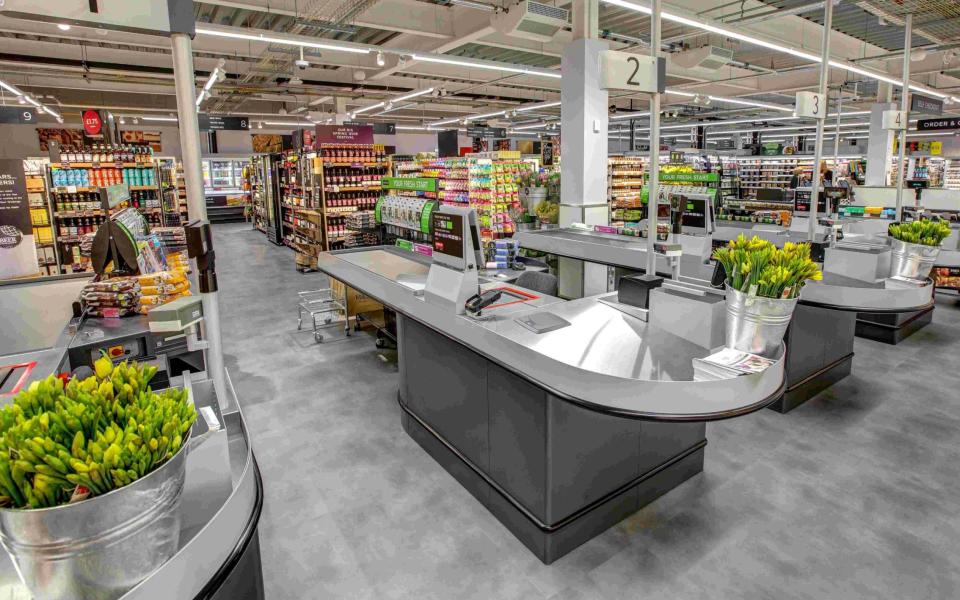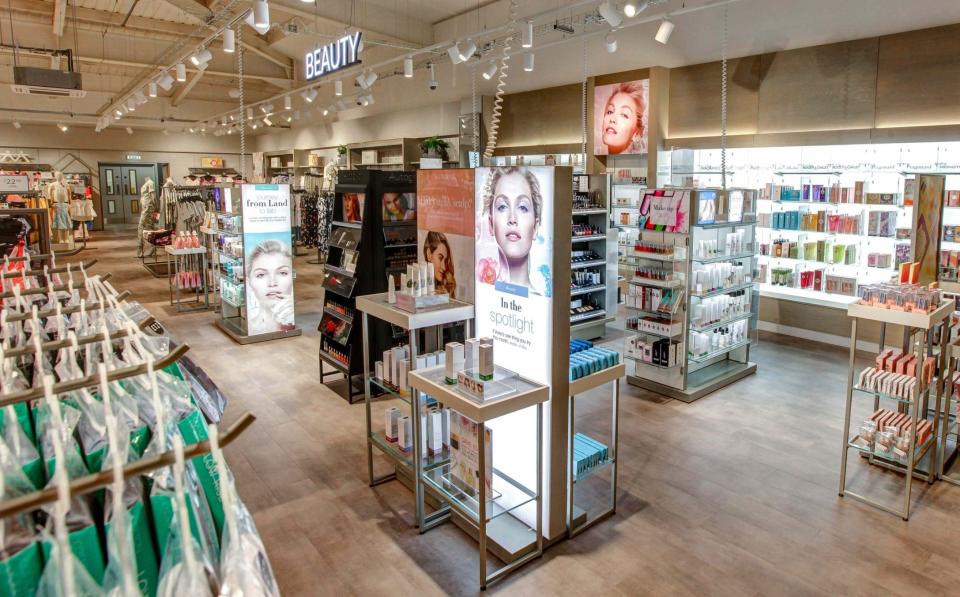How Marks & Spencer won back the middle classes – with John Lewis stuck in flux

When Birmingham wanted a showpiece retailer to anchor the shopping centre above the redeveloped New Street station, it turned to John Lewis.
“Today sends a clear message that John Lewis is firmly committed to the British High Street,” then managing director Andy Street said at the opening of the Birmingham store almost ten years ago.
Meanwhile, arch rival Marks & Spencer was struggling to keep pace, resorting to what it called “the drug of discounting” to get shoppers through the doors after years of failed turnaround attempts.
Yet today John Lewis's Grand Central store is closed – and M&S is gaining momentum.
Marks & Spencer is now forecast to leapfrog John Lewis in the rankings of Britain’s biggest retailers – a symbolic changing of the guard between two of the country's most iconic brands.

Trade publication Retail Week has predicted that M&S could overtake John Lewis Partnership (JLP), which also owns Waitrose, to become the nation’s seventh largest retailer by sales before the end of this year.
The shift is a tale of both stalling momentum at John Lewis and accelerating momentum at arch rival M&S.
The two businesses have been vying for high street dominance since the late 1800s. Both have department stores and grocery businesses.
In recent years, both have faced similar challenges: a battle to stay relevant with new generations, a struggle to adapt to online, and pressure to radically revamp their businesses in the face of stalling growth.
Prior to the pandemic, John Lewis seemed to be the stronger of the two.
After almost two decades of decline, M&S ignominiously dropped out of the FTSE 100 in 2019. The company had become short-hand for corporate dysfunction and drift.
Yet that same year, John Lewis posted its first ever half-year loss in a sign that trouble was brewing. 12 months later John Lewis cut its staff bonus for the first time since 1953.
Meanwhile, green shoots were appearing at M&S. Steve Rowe, who took charge in 2016, announced M&S’s first profit upgrade this century in 2021.
Stuart Machin, who took over from Rowe last year, has supercharged the turnaround effort.
Last month, Machin said the retailer had achieved its highest market share in clothing and home in seven years.

This has not come easily. While a favourite for women seeking sleepwear and underwear, M&S has struggled to convince shoppers its clothing was anything more than functional.
Then in early 2021, M&S announced it would start selling outside brands in its stores, stocking Hobbs, Seasalt, White Stuff and Nobody’s Child. Experts say this has helped draw people to its stores and boost sales.
M&S has “certainly moved itself into a much better place,” says Clive Black, an analyst at stockbroker Shore Capital.
“M&S have been trying to get the right stores in the right location - actually just as John Lewis has been doing – but it feels like it is further on in the journey and is actually now coming out the other side of that work,” he said.
M&S recently announced that it will in fact be opening stores once again, rolling out 20 new shops across the UK, including five in former Debenhams stores.

JLP, meanwhile, has been criticised for not taking a more radical approach. The company closed 16 locations during the pandemic but still has 332 supermarkets and 34 department stores. Running costs are climbing as inflation runs rampant and JLP warned in early December that it was on course to go around £18m over budget on its energy bill.
Dame Sharon White, who has been chairman of JLP since 2019, has said John Lewis must “adapt or die”.
However, plans to reinvent the business may prove a distraction. JLP wants 40pc of its profits to come from outside of retail by 2040 from ventures such as renting out property and offering financial services. These are areas in which it has comparatively little experience.
At the same time, the company’s brand is in flux. For years it was seen as aspirational, the shop to trade up to when the Ikea furniture was junked. However, the company has been pushing into cheaper segments of the market with its Anyday range, which has been one of John Lewis’s bright spots.
Last year the department store dropped its “Never knowingly undersold” pledge, one of the most famous mottos in British retail, and JLP confirmed this week it is looking for a new agency to work on its closely-watched Christmas ad for the first time in 14 years.
Efforts to diversify away from retail and relaunch the brand come as John Lewis’s core market – the middle classes – face their biggest income squeeze in decades.
Unlike M&S, John Lewis stocks expensive items like furniture and TVs, which are “unhelpful in the recessionary climate”, says independent retail analyst Nick Bubb.

Meanwhile, Waitrose is also under pressure. The supermarket’s market share slipped to 3.9pc in the 12 weeks to January 28, according to NielsenIQ’s latest grocery figures, compared to 4.2pc this time last year.
Waitrose is in the difficult position of competing more closely with the likes of Tesco, Sainsbury’s, Asda and, increasingly, Aldi and Lidl.
Shore Capital’s Black says: “There's something about Waitrose at the moment that just isn't connecting with its customer base. Whether it’s because they think it's too expensive, or the assortment isn't what people want... Clearly shoppers are seeing something which means that Waitrose is working for them. I’d imagine the gap will actually widen between M&S and Waitrose.”
M&S has had success with groceries in recent years and reached 3.7pc market share at the start of the year, already within striking distance of Waitrose. NielsenIQ’s Mike Watkins says he expects M&S’s share to keep growing, as it opens its new stores and “in particular larger food halls open over the next couple of years”.
Despite gloomy industry forecasts, inside JLP there is a sense that the business is on the right track. Executives are expecting it to record higher growth than Retail Week forecasts.
A John Lewis spokesman said: “We are focused on delighting our customers, by providing quality products at great value combined with fantastic service from our Partners, who own the business.”
Like it or not however, the stalking horse of M&S is hounding John Lewis forward – and may yet win the race.

 Yahoo Movies
Yahoo Movies 